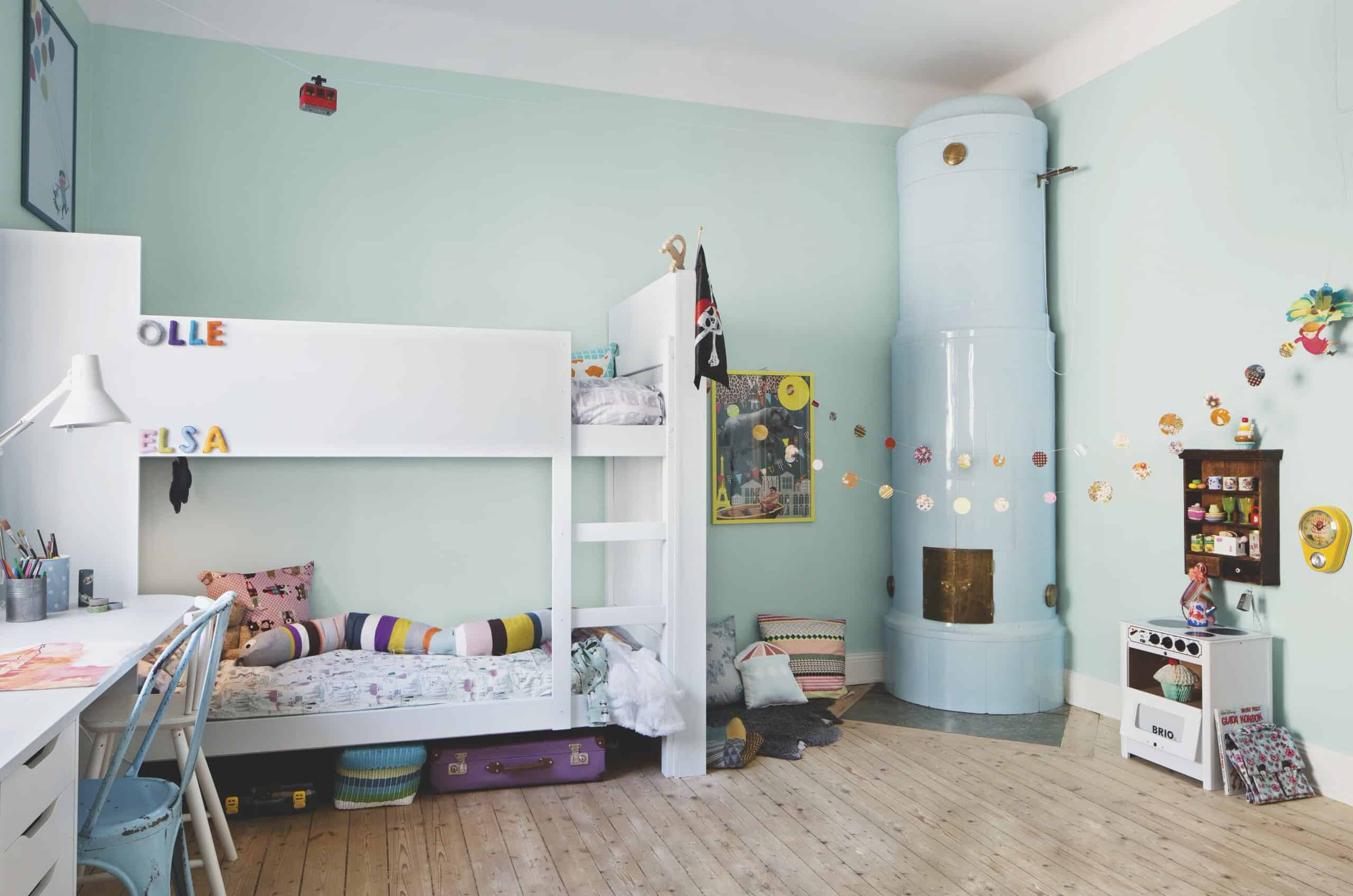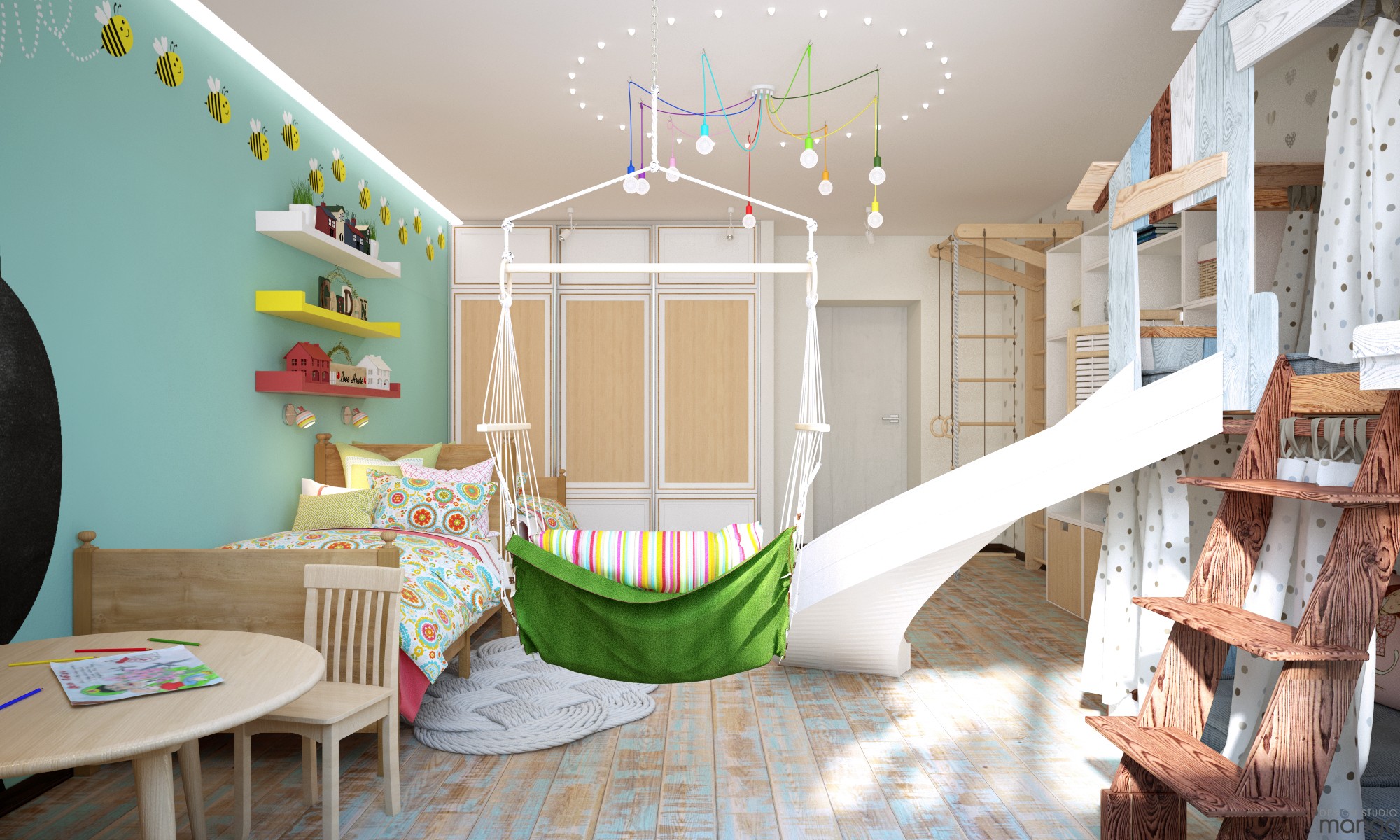Creating a Safe and Functional Space

A child’s bedroom should be a sanctuary, a place for rest, play, and learning. Designing a safe and functional space is crucial for their well-being and development. By prioritizing safety, comfort, and accessibility, you can create a bedroom that fosters a sense of security and independence.
Designing a Safe Bedroom Layout
A well-designed bedroom layout can significantly enhance safety. Consider these essential safety factors:
- Place furniture away from windows: This prevents children from climbing on furniture and potentially falling out of windows. Keep furniture at least 3 feet away from windows, especially if the window is above the first floor.
- Use non-toxic materials: Opt for furniture and decor made from non-toxic materials, such as solid wood, natural fabrics, and low-VOC paints. This minimizes exposure to harmful chemicals that can affect a child’s health.
- Incorporate safety features: Invest in safety features like outlet covers, window guards, and furniture anchors. Outlet covers prevent children from sticking objects into electrical outlets, while window guards provide an extra layer of protection against falls. Furniture anchors secure heavy furniture to the wall, preventing tipping accidents.
Creating a Comfortable Sleep Area, How to design a children’s bedroom
A comfortable sleep environment is essential for a child’s physical and mental health. Here are some tips for creating a restful sleep space:
- Choose the right size bed: Select a bed that is the appropriate size for the child’s age and height. A too-small bed can be uncomfortable, while a too-large bed can be overwhelming and unsafe.
- Provide comfortable bedding: Choose soft, breathable bedding materials that are hypoallergenic and easy to wash. Consider using a mattress topper or memory foam mattress for added comfort.
- Create a calming atmosphere: Use dim lighting, soft colors, and calming decor to create a relaxing atmosphere in the sleep area. Avoid using bright lights or electronics in the bedroom, as they can disrupt sleep patterns.
Designing Age-Appropriate Storage Solutions
Storage solutions should be age-appropriate, accessible, and encourage organization.
- Shelves: Open shelves are great for displaying books, toys, and other items. Choose shelves that are at a height that is easily accessible to the child.
- Drawers: Drawers provide a great way to store clothes, toys, and other belongings. Choose drawers with sturdy handles that are easy for children to open and close.
- Bins: Bins are versatile and can be used to store a variety of items. Label bins with pictures or words to help children identify the contents and encourage organization.
Incorporating Age-Appropriate Furniture and Decor
Furniture and decor should be both durable and appealing to children.
- Durable furniture: Choose furniture that is made from sturdy materials and can withstand the wear and tear of everyday use. Consider furniture with rounded edges and corners to prevent injuries.
- Appealing decor: Incorporate colors, patterns, and themes that are age-appropriate and reflect the child’s interests. Use colorful rugs, wall decals, and artwork to add personality to the space.
Stimulating Creativity and Imagination: How To Design A Children’s Bedroom

A child’s bedroom should be more than just a place to sleep; it should be a haven for imagination and creativity. It’s a space where they can explore their interests, develop their talents, and dream big. By incorporating elements that encourage play, exploration, and artistic expression, you can transform a bedroom into a vibrant and inspiring sanctuary for your child.
Creating a Playful and Engaging Space
A child’s bedroom should be a place where they can freely express themselves through play. This doesn’t mean you need to turn their room into a full-blown playroom, but incorporating designated areas for different activities can spark their creativity and encourage them to engage in imaginative play.
- Play Areas: A dedicated play area can be as simple as a rug with a few toys or as elaborate as a playhouse or a tent. This space can be used for imaginative play, storytelling, or simply relaxing with friends. A corner with a small table and chairs can become an art studio, a play kitchen, or a science lab.
- Creative Corners: A designated area for art supplies, building blocks, or other creative materials encourages your child to explore their artistic talents. You can create a corner with a small easel, shelves for art supplies, and a comfortable seat for drawing or painting. This area can be a haven for creative expression and exploration.
- Learning Zones: Incorporate a learning zone with bookshelves, a small desk, and a comfortable chair. This space can be used for reading, writing, or studying, and it can also be a place for quiet reflection and contemplation.
Using Color and Patterns to Create a Stimulating Environment
Color and patterns can have a profound impact on a child’s mood and creativity. Vibrant colors can stimulate the senses, while playful patterns can spark the imagination.
- Vibrant Colors: Bold colors like red, yellow, and blue can be energizing and stimulating, encouraging creativity and imagination. These colors can be used on walls, furniture, or even in the form of colorful rugs or pillows.
- Playful Patterns: Patterns like stripes, polka dots, or geometric shapes can add a sense of fun and whimsy to a bedroom. You can use patterned wallpaper, curtains, or bedding to create a playful and engaging environment.
- Interesting Textures: Different textures can also stimulate a child’s senses. For example, you can use a fluffy rug, a textured wallpaper, or a soft throw blanket to create a multi-sensory experience.
Incorporating Wall Art and Decor That Sparks Curiosity
Wall art and decor can be a powerful tool for inspiring a child’s imagination and fostering their interests. By incorporating artwork, posters, or decorative elements that reflect their passions, you can create a space that sparks their curiosity and encourages them to explore new ideas.
- Artwork: Display artwork that reflects your child’s interests, such as paintings of animals, landscapes, or famous historical figures. You can also create your own artwork together, using finger paints, crayons, or other art supplies.
- Posters: Posters of favorite characters, sports teams, or scientific discoveries can add a sense of excitement and inspire a child’s imagination.
- Decorative Elements: Decorative elements like maps, globes, or antique toys can spark a child’s curiosity and encourage them to explore new ideas.
Designing a Space That Encourages Exploration and Discovery
A child’s bedroom should be a place where they can explore their world and discover new things. You can create a sense of wonder and adventure by incorporating elements that encourage exploration and discovery.
- Reading Nook: A cozy reading nook can be a magical place for a child to escape into the world of books. Create a comfortable space with a beanbag chair, a soft rug, and a bookshelf filled with their favorite stories.
- Secret Hiding Place: A secret hiding place, such as a tent, a playhouse, or a cubbyhole, can be a source of endless imaginative play. It can also be a place where a child can retreat for quiet time or to escape from the hustle and bustle of everyday life.
Personalizing the Space

A child’s bedroom should be a reflection of their unique personality and interests. Creating a space that feels personal and inviting can have a positive impact on their self-esteem and sense of belonging. By incorporating their interests and allowing them to participate in the design process, you can create a space that fosters their creativity and independence.
Incorporating the Child’s Personality and Interests
The key to personalizing a child’s bedroom is to consider their individual interests and passions. This could include their favorite colors, characters, hobbies, and even their favorite books or movies. For example, a child who loves animals could have a bedroom decorated with animal prints, stuffed animals, and wall art featuring their favorite creatures. A child who enjoys reading could have a cozy reading nook with a comfortable chair, a bookshelf filled with their favorite books, and soft lighting.
